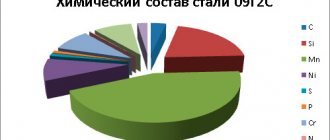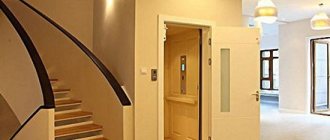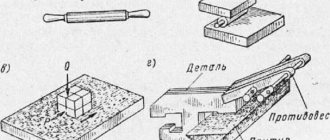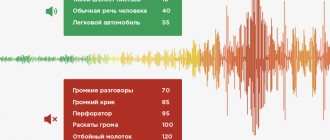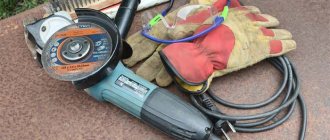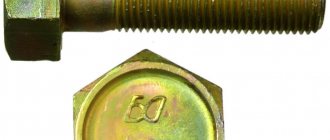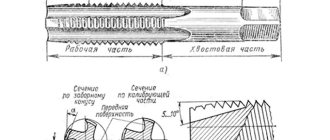- October 6, 2018
- Housing law
- Leonid Ulyanov
It is necessary to measure noise. After all, there are dangerous noise levels for human health. For example, noise of 70-90 decibels (dB) is a potential cause of nervous system dysfunction. Noise exceeding 100 dB has a negative effect on hearing. And if the parameters go beyond 200 dB, then the situation is extremely dangerous and can lead to death.
The stay of people in the room will be comfortable if the noise level does not exceed 55 dB during the day, and at night – 45 dB.
Each room must have a certain level. This is regulated by regulatory documents. And to check for this compliance, noise levels are regularly measured.
Work areas
In work areas of industrial enterprises, noise levels are measured at at least three points. The noise-analyzing microphone is placed above the floor at a height of 150 cm. It is directed towards the noise source and moves away from the employee performing the measurement by at least 50 cm.
When measuring noise, the following data is revealed:
- Cumulative sound pressure parameters.
- Spectral structure of noise in octave waves.
- Equivalent sound levels in normalized decibels.
With these measurements, it is determined what the noise levels are, and spectral examination in its octave waves is not carried out.
Experts analyze the danger of noise using sound pressure parameters in dBA (intensity designation). In this case, the frequency average geometric data is taken into account.
What does it measure?
As the name suggests, a sound level meter measures the level of extraneous sounds and noise. It is used to determine:
- volume of sound produced by acoustic systems;
- compliance of workplaces with standards during their certification;
- noise level in any premises, construction sites, production facilities;
- the quality of means protecting against extraneous sounds during their testing.
Noise level meters allow you to monitor the effectiveness of soundproofing systems installed in rooms. In the construction industry, they are used to check the compliance of soundproofing building materials with the characteristics declared by their manufacturers. The level of insulation of construction projects from extraneous noise is assessed.
Noise standards have been established that must be observed day and night in residential premises. If you violate the standards, you may be subject to administrative penalties. Such irresponsibility is punishable by a fine or confiscation of equipment and instruments that produce loud sounds. To attract the perpetrators who must be held accountable for such violations of order, it is necessary to document the noise level. In this case, noise meters are used to accurately determine to what extent the established standards have been violated. You can influence noisy neighbors by contacting law enforcement officers. This equipment should be at their disposal and used to determine the circumstances on the spot.
In production, working conditions are monitored without fail. A sound level meter is one of the devices that is used in this case. There are standards specifically established by labor legislation for noise levels for equipment. A person may lose their hearing if standards are not followed in the workplace.
Sanitary standards
Below is a table showing the highest noise levels allowed for various rooms. These are levels that should not lead to health problems during the entire working time.
Table 1. Noise enters the room from outside.
| Details | SPOV | Salary | |||||||
| 63 | 125 | 250 | 500 | 1000 | 2000 | 4000 | 8000 | ||
| Sound pressure parameters | |||||||||
| 1) Areas of intellectual work, emergency rooms. | 71 | 61 | 54 | 49 | 45 | 42 | 40 | 38 | 50 |
| 2) Management premises | 79 | 70 | 63 | 58 | 55 | 52 | 50 | 49 | 60 |
| 3) Booths for remote control | 94 | 87 | 82 | 78 | 75 | 73 | 71 | 70 | 80 |
| 4) The same booths, but with telephone connections | 83 | 74 | 68 | 63 | 60 | 57 | 55 | 54 | 65 |
| 5) Precision assembly areas | The same indicators as point 4. | ||||||||
| 6) Rooms with very loud operational and computing units | 94 | 87 | 82 | 78 | 75 | 73 | 71 | 70 | 80 |
| 7) Work areas in factory floors | 103 | 96 | 91 | 88 | 85 | 83 | 81 | 80 | 90 |
Abbreviations in the table: SPOV - average parameters of octave waves (measurement in Hz), ZP - sound limit, unit of measurement - dBA.
Points 1-4 are controlled under conditions that noise is generated outside and penetrates into the premises
Points 5 and 6 must be performed when noise is generated in the premises
Noise level and its impact on humans
How does noise level affect a person? There is a noise level that is harmful to humans and leads to serious health problems. Typically the optimal level is 55 decibels. When constantly staying in places where the level reaches 70-90 decibels, a person begins to experience hearing problems. It also negatively affects the human nervous system. Constant distracting sounds do not allow a person to both concentrate and fully relax. Symptoms include apathy, depression, insomnia, nervousness and fatigue. This, of course, affects the functioning of human internal organs and leads to more serious complications. It is not recommended to stay for a long time where the level reaches 100 dB.
In factories, workers who work with noisy equipment are given special insulating headphones, as required by safety standards. Therefore, for an unprepared person without personal protective equipment, this level will be harmful. From 140 decibels, such a noise level is destructive for a person and can even lead to death if the person was weakened or cause concussion and instant hearing loss. While the norm for a person is about 55 decibels, at night it should not be higher than 40 dB, otherwise the person will no longer be able to have quality rest.
Order a free consultation with an ecologist
Techniques
Measuring noise levels usually occurs using a subjective or objective method. The first is based on the use of phonometers. They measure noise by matching it to a pure tone of a specific frequency. It is generated by a special apparatus. The measuring operations are quite complex and produce results of limited use.
The second method involves the use of sound level meters. They convert sound waves into electrical waves. After which the signal goes to the meter. Various filters can be connected to the output section of the amplifier to correct the signal. They allow you to obtain more accurate data on the intensity of noise at specific frequencies.
Today, the second method of measuring noise levels is increasingly replacing the first. And this is logical. After all, working with phonometers is quite difficult, and the results obtained are difficult to apply.
Alternative ways to measure sound pressure level
In a broad sense, the sound level meter device not only comes in a separate housing and in the classical presentation that was given above, but this device can also be part of other measuring instruments or be replaced with analogues, for example, if the appropriate software and microphone are available. The most common alternative options for sound level meters, which can also help with the specific task of measuring the sound pressure level inside a car:
- Smartphone and applications for measuring sound pressure. Nowadays, almost every person has a smartphone, and with its help it is also possible to make fairly approximate measurements of the sound pressure level at a specific point in space. To do this, the smartphone initially has everything necessary structurally, namely a device with a processor and a microphone. As software, there are quite a large number of programs that can turn a gadget into a sound level meter in a few minutes, and the programs can be both paid and free. A significant drawback of this measurement method is the initial inability of any phone to solve such technically complex problems: usually the smartphone microphone is quite low-sensitive and was originally created for completely different purposes.
This is why the resulting sound pressure measurements will be very limited and approximate. You should be wary of building a theory of vibration and sound insulation based only on smartphone measurements. However, as a last resort, this measurement method has a place to be used. Another disadvantage of using a smartphone as an alternative to a sound level meter is the rather high complexity that can be encountered at the stage of setting up the application and preparing it for work, for example. Depends on the program, but some applications require preliminary setup/calibration, without which the resulting measurements will be completely irrelevant.
- Computer/laptop with microphone and related applications. This option is already more professional and advanced, it allows you to maintain the mobility of measurements (in the case of a compact laptop), as well as obtain highly accurate measurement values, which, with the proper level of the microphone and the computer hardware itself, can even be as good as sound level meters in their own case.
However, this method also has considerable disadvantages: it is quite expensive and very difficult to master, and is definitely not suitable for beginners. Often only a specialist can fully understand sophisticated functional software, and the same applies to the ability to use the full unlimited potential of a given measurement method.
- Built-in sound level meter on board another device. Recently, so-called devices have begun to appear more and more often. “all in one”, in which you can immediately find an installed sound level meter “on board”. In particular, these can be various multimeters with advanced functionality. This option will already be very attractive for beginners and people who do not need unnecessary subtleties of measurements, but simply see and evaluate the overall picture of noise. Sound level meters found as part of such devices will, of course, not be distinguished by either high measurement accuracy or the presence of advanced filters...
Such a sound level meter acts more like an “appendage” or a “bonus”, but it is very, very pleasant and appropriate for those who are seriously involved in car audio. Therefore, with the help of such a device, it is quite possible to make a superficial measurement to obtain approximate results of the noise level in the cabin, on the basis of which it is quite possible to build strategies for further noise reduction in the vehicle interior.
Principle and design of a sound level meter
This device measures noise in dB. Its design contains principles that create an exact relationship between its performance and sound pressure. These factors are perceived by the hearing aid. There is a proportionality between the noise level and the electrical signal.
Device composition:
- Microphone
- Amplifier.
- Correction filters.
- Voltmeter.
- Display.
- Power unit.
The device has a scale with divisions in dB and an optional addition in the form of a tripod.
There are many models of sound level meters. They have different appearance, dimensions, cost and manufacturer. But there is also a single classification.
How are noise and vibration meters useful for home use?
Such a meter, always at hand, will help you regularly monitor the noise level. Residents of large cities very often face exceeding various standards. Therefore, constant monitoring can identify violations and eliminate them before they cause complications.
If you want the most accurate results, then you can contact the EcoTestExpress laboratory. We carry out not only noise measurements, but also vibration measurements. All our measurement reports are legally binding. If you go to court against the culprit of noise pollution, our protocols are guaranteed to help you win the case.
General classification of sound level meters
It categorizes the device according to accuracy level. There are 4 categories:
- Zero – devices with better accuracy.
- The first is devices that are used in laboratories.
- The second is models for production conditions.
- The third is devices for household use, which give approximate results.
The following classes of sound level meter filters are distinguished:
- A – for low volume.
- B – for average volume.
- C – for strong volume.
Octave analyzers
Octave analyzers are used to study the spectral structure of noise. Octave bands are used to calculate sound pressure.
They operate on the following principle: their upper limit frequencies are twice as low as their lower limit frequencies. For example: 40–80, 70–140, etc.
Characteristics of the octave band – geometric mean frequency f. It is obtained from the indicated limiting frequencies, which are designated as follows:
- top – f1;
- bottom – f2.
The geometric mean frequency is determined by the formula: f av =√ f1 f2
Housing problem
It is also necessary to measure the noise and vibration levels in the apartment and house. Models of the third category of accuracy are used for the procedure. They are affordable and easy to use.
First you need to study the operating modes of the device. As a rule, there are three of them:
- F – for analysis of constant noise.
- S – for short periodic noises.
- I – for impulse noise.
Power options for the device: network, battery, batteries.
Usually the kit is complete without a case and a tripod. Some devices have a memory card. It contains a register of previous device indicators.
Conclusion
Sound level meters are highly specialized devices aimed at
measuring the level of sounds unfavorable to human health. For accurate background acoustic analysis, it is very important to use the device correctly.
This process must take place in accordance with accepted norms and standards. If all the rules are strictly followed, the result will be an objective picture of the specific noise pollution in a particular area.
Online method
Our time is a time of progress and high technology. Today, almost everyone has a computer or smartphone. Using them, you can also make the necessary noise level measurements. The main condition here is to install a special application. The second option is to find a sound level meter online (enter such a query in a search engine). The resource will also contain detailed instructions on how to proceed.
This is a fairly economical method. It eliminates the need to purchase a sound level meter. But are there any subtleties here? Indicators on a PC, laptop or smartphone may differ significantly.
The accuracy of measurement operations is affected by the parameters and quality of the microphone of your device. If this fact bothers you, then work with a digital sound level meter.
You can buy a serious microphone and connect it to your computer. And then measuring noise at home will be even easier.
Rating of quality sound level meters in 2022
We reviewed the 10 best decibel meters, 1st, 2nd, 3rd class, according to buyers. The information provided will tell you how to choose the right device, how much it costs, and what functions will be useful when using it.
3rd class devices
Such products are used for indicative research; the frequency range of readings should be from 31.5 to 8000 Hz, and the maximum deviation is ±2.0 dB.
AMTAST AMF004
4th place.
The electronic device AMF004 will help, without wasting energy, measure sound in various environments. AMTAST has proven itself well in the field of labor protection, successfully controlling noise pollution in factories, large enterprises, and at home.
An important distinguishing feature of the model is a huge screen with a light sensor; it automatically turns on when visibility is insufficient. Thanks to this, the resulting values, in the range from 30 to 130 dB, will be visible from afar.
The equipment is manufactured according to ANSI S1.4-2 standards approved in the USA.
The decibel meter is easy to use, has an ergonomic body, and is pleasant to the touch. To start working, just press “Power” and after a second you can take readings of the background environment, everything happens automatically. AMF004 turns itself off (if you do not use the unit for 11 minutes).
AMTAST AMF004
Technical indicators:
| Options | Characteristics |
| Manufacturer | AMTAST(USA) |
| Microphone | 1.2 inches, capacitive |
| measurement range | 30-130 dBA |
| Value of division | 0.1 dB (4-digit indicator) |
| Error | ±1.5 dB |
| Measurement frequency | 31.5 Hz - 8.5 KHz |
| Secondary functions | Screen backlight, low battery indication |
| Environmental parameters | from 0°C to 40°C, humidity less than 80% (non-condensing) |
| Nutrition | 4 batteries 1.5V type AA |
| Dimensions (mm) | 149x57x36 |
| Weight (g) | 110 |
| Guarantee | 12 months |
Advantages:
- automatic shutdown;
- ergonomic body;
- display backlight;
- battery charge indication.
Flaws:
- high error, suitable for household use only.
VoiceLiner SLM-20
3rd place.
SLM-20 is a compact, ergonomic device for professionals. Operates from 30 - 130 dB, with a frequency of 31.5 Hz - 8 KHz, error ±1.5 dB, scale gradation 0.1 dB. There are two correction channels (A, C):
- A – used in standard studies, capable of equalizing indicators in the range of human sound perception;
- C - designed for extreme loads, records noise in ordinary octaves.
Limit measurements are set independently:
- 30 – 70;
- 60 – 100;
- 90 - 130 dB.
Research can be done in stages, at intervals.
- 1/sec;
- 1 / 0.125 milliseconds.
The case is made of plastic, reinforced, in front there is a digital display, navigation keys. On the right there are cells for batteries. The device is comfortable to use when holding it with one hand.
The product has a huge amount of built-in memory (60,000 indicators), which is integrated with a computer for exchanging data, drawing up graphs and diagrams. Technical indicators:
| Options | Characteristics |
| Measuring range | 30 - 130 dB |
| Permission | 0.1 dB |
| Error | ±1.5 dB |
| frequency range | 31.5 - 8000 Hz |
| Frequency factor | A, C |
| Dynamic range | 40 dB |
| Microphone type | polarized, capacitive |
| Fixing maximum values | Yes |
| Display backlight | No |
| Power supply | 1×9V battery |
| Calibration | Yes |
| Work, temperature | 0 - 40 °C |
| Humidity | 10 — 75 % |
| Height above sea level | up to 2000 m |
| Storage, temperature | -10 – 50 °C |
| Humidity | 10 — 80 % |
| Size | 195 × 65 × 35 mm |
| Weight (with batteries) | 151 gr |
| Package | 210 × 165 × 56 mm |
| Weight (full set) | 386 gr. |
VoiceLiner SLM-20
Advantages:
- memory capacity, recording capability;
- computer integration;
- frequency correction channels.
Flaws:
- not detected.
Smart Sensor AR854
2nd place.
AR854 is a popular, sought-after model on the decibel meter market. It is capable of taking readings in a short time, has a USB interface, and transfers the received data to a personal computer for detailed study, archiving, and processing. The large screen, with an intuitive interface (graphics in the form of a pie chart), is clearly visible, and the information is easy to digest.
Smart Sensor is packed with useful functions: thanks to a built-in alarm that will warn if the noise level is exceeded, a distracted researcher has the opportunity not to miss important indicators. The operating interval is 30-130 dB, an error of no more than 1.5 dB is allowed. AR854 operates using four regular 1.5V batteries.
All these parameters allow the device to be in demand in production, at home, and when carrying out safety measures.
Technical indicators:
| Options | Characteristics |
| Manufacturer | Smart Sensor (China) |
| Microphone | 1.2 inches |
| Measurements | 30-130 dBA, 35-130 dBS |
| Frequencies | 31.5Hz-8.5KHz |
| Error | 1.5 dB |
| Gradation | 5 digits, 0.1 dB |
| Time to take readings | 2 s. |
| Backlight | + |
| Auto shutdown | + |
| Battery indicator | + |
| Exit | AC-0.707V (rms)=600Ω/step; DC-10mV/dB=100Ω |
| Nutrition | 4x1.5V type AA |
| Dimensions | 183x67x30 |
| Weight, g. | 168 |
| Guarantee period | 1 year |
Smart Sensor AR854
Advantages
- built-in alarm;
- large screen;
- convenient interface.
Flaws:
- not detected.
VoiceLiner SLM-40
1 place.
SLM-40 is a Russian-made unit. With its help, sound volume measurements are made from 30 to 130 dB. Research can be carried out with a resolution of 0.1 dB with an error of ±1.5 dB. The operating interval limits range from 31.5 Hz to 8 KHz. The signal amplitude limit is 40 dB. There are two frequency coefficients (A, C), it is possible to calculate indicators from the received data.
VoiceLiner has a sensitive integrated microphone (dimensions: 0.5 inches), protected by a soft cap.
SLM-40 can calibrate data up to 94 dB using a USB connector, the product is connected to a personal computer to process the received information. The body of the device is shock-resistant, made of plastic
Technical indicators:
| Options | Characteristics |
| Measurements | 30 - 130 dB |
| Permission | 0.1 dB |
| Error | ±1.5 dB |
| Frequency | 31.5 - 8000 Hz |
| Coefficient | A, C |
| Dynamic range | 40 dB |
| Microphone type | polarized, capacitive |
| PC interface | USB |
| Fixing maximum values | + |
| Memory | 60000 meas. |
| Display backlight | + |
| Power supply | 1×9V baht. |
| Calibration | + |
| Work, temperature | 0 - 40 °C |
| Humidity | 10 — 75 % |
| Height above sea level | up to 2000 m |
| Storage | -10 – 50 °C |
| Humidity | 10 — 80 % |
| Size | 195 × 65 × 35 mm |
| Weight (with batteries) | 155 gr |
| Packing size | 270 × 185 × 60 mm |
| Weight (full set) | 558 g |
VoiceLiner SLM-40
Advantages:
- shock-resistant housing;
- voluminous memory.
Flaws:
- not detected.
Products "2nd class"
Devices of this level are intended for “field” research, frequency range 31.5 Hz-8000 KHz, maximum deviation ±1.0 dB.
Testo 816-2
3rd place.
Testo 816-2 detects sound fluctuations in the range of 30 - 160 dB. Information collected in production and public places is processed and then used to improve safety, control and protection of working conditions.
The product is included in the State Register of SI. Verification of equipment allows you to use the obtained data for commercial purposes, for official documents, conclusions. An intuitive interface helps you take measurements using two keys located on the body:
- noise level measurement interval increased to 160 dB;
- a significant amount of memory stores 100 indicators with a frequency of 1 second;
- The USB connector transmits information to a PC;
- operating temperature from -20 to +60 °C.
The results are displayed on the display, in the form of a diagram or table. The db24 software saves data to a laptop in MS Excel format.
Testo 816-2 has a shock-resistant body and compact dimensions. The standard kit includes: a wrist strap that helps when carrying the device, a protective case. Technical indicators:
| Options | Characteristics |
| Current and maximum sound level | + |
| Data logging at 1 second intervals | + |
| Selection of data recording frequency (1…10 s) | — |
| Averaging (Leq or Lavg) | — |
| Sound level measurement ranges, dB | 30 — 100, 60 — 130 |
| Frequency characteristics | A, C |
| Timing characteristics | S, F, I |
| Internal noise level, dB, no more | 33 |
| Accuracy | Class 2 according to GOST R 53188.1-2008 (IEC 61672-1) |
| Limits of permissible absolute error of sound level measurements, dB | ±1,0 |
| Operating frequency range, Hz | from 63 to 8000 |
| Memory | 419,000 measurement points (100 blocks) |
| Display | 128 x 128, mono, LCD display |
| Output (PC) | USB 2.0 (A - mini B) |
| Batteries/accumulators | 3 AA alkaline batteries (included) or rechargeable batteries |
| Mains power | 5 V DC current (Mini-B USB 5S connector) |
| Battery life | more than 35 hours |
| Working conditions: | |
| Humidity | 5…90%RH (without condensation) |
| Ambient air temperature, C° | from 0 to 40 |
| Atmospheric pressure, kPa | from 65 to 108 |
| Relative air humidity (at temperature 30°C), %, no more | from 5 to 90 |
| Atmospheric pressure, kPa | 65 — 108 |
| Storage conditions: | |
| Temperature | -20…60°С |
| Size(mm) | 72 x 212 x 31 |
| Weight | 245 g (with batteries) |
Testo 816-2
Advantages:
- ergonomics;
- increased measurement interval. LCD monitor.
Flaws:
- not detected.
CEM DT-8820
2nd place.
"SEM DT - 8820" is a 4-in-1 digital multimeter (lux meter, moisture meter, thermometer, sound level meter) that performs high-precision analysis:
- noise indicators;
- illumination;
- humidity;
- temperature.
CEM DT-8820 has a large screen on which there is an indication of measurements (Lux, °C, %RH, dB, overrange, battery discharge). The device automatically turns off if inactive for more than 10 minutes.
Multitasking, first-class calibration is ideal for professional use, and thanks to its user-friendly, simple interface, the DT-8820 is a desirable device for home use. The device is powered by a Krona battery. When the supply voltage drops below the required level (battery low), the “BAT” indicator is activated. Technical indicators:
| Options | Characteristics |
| Frequency of measurements | 1.5 changes/s |
| load A LO | 35 - 100 dB |
| load A HI | 65 - 130 dB |
| load C LO | 35 - 100 dB |
| load C HI | 65 - 130 dB |
| Frequency | 30 Hz – 10 kHz |
| Accuracy (at 94 dB) | ±3.5dB |
| Permission | 0.1dB |
| Nutrition | battery (9 V), Krona type |
| Dimensions (HxWxD) | 251 x 63.8 x 40 mm |
| Net weight | 250 g |
CEM DT-882
Advantages:
- decent calibration;
- automatic shutdown;
- large display;
- simple interface;
- suitable for professional use;
- multitasking.
Flaws:
- not detected.
TESTO 815
1 place.
Ideal equipment for measuring purposes. Testo 815 is ideal for research in the field of heating, ventilation, air conditioning systems, assessing sound levels in discos, industrial plants, and monitoring the operation of generators.
Technical indicators:
| Options | Characteristics |
| Fixation interval | from 32 to 130 dB |
| Error | ±1 dB |
| Working temperature | from 1 to 40 °C |
| Power supply | Krona 9V |
| Dimensions | 255x55x43 mm |
| Weight | 0.195 kg |
НTESTO 815
Advantages:
- error 1 dB;
- used in the professional field;
- maintainability.
Flaws:
- not detected.
“1st class” devices
Frequency range 20 - 12500 Hz, with an error of less than 1 dB, devices of this level are used in laboratories.
DT-805
3rd place.
The DT-805 decibel meter is distinguished by its increased sensitivity and is used for standard tasks typical for a product of its class:
- measuring the volume level in rooms;
- construction sites,
- car exhaust.
The equipment is configured using keys on the case; the operating interval has two modes. Information is presented on a backlit digital screen. DT-805 has two filters:
- And for weak sound;
- filter C for peak loads.
DT-805 is used by traffic police to determine the noise level of a car exhaust system. Batteries for the device are included.
Technical indicators:
| Options | Characteristics |
| Automatic range selection | + |
| Register MIN and MAX | + |
| Hold readings | + |
| Battery indicator | + |
| Overload indication | + |
| Filter type | A and C |
| Types of response | Fast and slow |
| Operating temperature range, °C | 0 — 40 |
| Relative humidity, % | 90 |
| Noise level, dB | 30-130 |
| Frequency,Hz | 30-8000 |
| Error | 0.05 |
| Display | LCD |
| Length, sm | 5.5 |
| Width, sm | 3.3 |
| Height, cm | 21 |
| Package weight, g | 250 |
| Manufacturer | CEM-Instruments |
| Power supply | 9V Krona |
| A country | China |
DT-805
Advantages:
- two filters;
- high accuracy of readings.
Flaws:
- not detected.
TESTO 816-3
2nd place.
"TESTO 816-3", recorded in the State Register, was created using the latest technologies. All models in this line have excellent reading accuracy. The device is ergonomic, shock-resistant, and carries out background noise measurements in various areas (industrial, domestic use) quickly, in accordance with the necessary regulations:
- intuitive control using two buttons;
- durable casing, attractive design;
- high resolution screen;
- ability to use “db24” software;
- compliance with IEC 61672 regulation;
- increased interval for recording readings;
- registration and averaging option;
- battery 35 hours;
- USB connector;
- recording readings in the form of Excel spreadsheets;
- Warranty period 2 years;
Using TESTO is a simple, accessible method for recording noise pressure levels over a given time interval.
Technical indicators:
| Options | Characteristics |
| Number in the State Register of SI of the Russian Federation | 50850-12 |
| Measuring range | 32 … 130 dBh |
| Product code | 5608163 |
| Spectral range | 31.5…8000 Hz |
| Filter type | A, C |
| Battery Type | 3 AA batteries |
| Weight | 195 g |
| Dimensions (L x W x H) | 255 x 55 x 43 mm |
| Working temperature | 0°С … 40°С |
| Safety Standards | ANSI S1.43, IEC 60804 |
| Storage temperature | -20°С…60°С |
| Memory | 419,000 measuring points |
| Additional functions | Averaging (Leq or Lavg). |
TESTO 816-3
Advantages:
- use of “db24” software;
- powerful battery;
- shock-resistant housing;
- wide range of readings.
Flaws:
- not detected.
Sound insulation check
Doors and windows are the elements through which various noises can enter the apartment. And therefore, the level of their sound insulation is of greater importance for a comfortable stay.
This level can be determined using simple testing. Some kind of noise source is needed here. You can just turn on music on your phone and close the door.
After which the sound level meter is turned on, a measurement is taken, the door is opened and the operation is repeated. You will get two indicators of the device. Subtract the smaller from the larger number. This is the isolation level.
For best accuracy, make sure that there is no unnecessary noise in the apartment. You also need to check that the sound does not pass through the walls.

